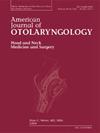模拟喉病理的复杂关系:沙特阿拉伯患者发音障碍的结构方程分析
IF 1.7
4区 医学
Q2 OTORHINOLARYNGOLOGY
引用次数: 0
摘要
语音障碍是一种常见的喉部疾病,在一些情况下会损害沟通和生活质量,然而,危险因素与特定喉部病变之间的相互作用仍然知之甚少。以往的研究往往缺乏对这些多因素相互作用的结构化建模。我们利用结构方程模型(SEM)在一个基于沙特的大型队列研究直接和间接途径连接人口因素,行为变量,以及喉部病理类型。方法回顾性队列研究检索并分析沙特阿拉伯利雅得一家三级医院的发声障碍患者的相关资料。喉部病理分为结构性、炎性、神经性和功能性。我们提出的扫描电镜框架评估了从危险因素到这些类别的直接和间接途径,包括交叉病理联系和调节作用。结果本研究共纳入998例符合条件的发声障碍患者。结构病变最常见(33.9%)。扫描电镜显示了极好的拟合(CFI = 0.961, RMSEA = 0.049),并发现了显著的途径:女性性别强烈预测结构(β = 0.412)和功能病理;年龄增长与炎症、神经和功能类型呈正相关;吸烟与炎症病理有显著相关性(β = 0.338);职业语音使用预测结构(β = 0.356)和功能(β = 0.297)。结论:这种基于扫描电镜的病因模型揭示了沙特人口中具有明确人口特征的特殊和重要的语音障碍通路。研究结果强调了特定的高风险群体(如女性声音专业人士、老年吸烟者)和重要的进展模式(炎症到神经系统、结构到功能)。该框架有助于提供更精确的风险分析,支持基于特定风险因素和相互关联的病理发展的有针对性的筛查方案和量身定制的预防干预措施。本文章由计算机程序翻译,如有差异,请以英文原文为准。
Modeling complex relationships in laryngeal pathologies: A structural equation analysis of dysphonia in Saudi Arabian patients
Introduction
Dysphonia is a prevalent laryngological condition that impairs communication and quality of life in several cases, however the interplay between risk factors and specific laryngeal pathologies remains poorly understood. Previous studies often lack structured modeling of these multifactorial interactions. We utilized structural equation modeling (SEM) in a large Saudi-based cohort to investigate the direct and indirect pathways linking demographic factors, behavioral variables, as well as the types of laryngeal pathologies.
Methods
Our retrospective cohort study retrieved and analyzed the relevant data from dysphonia patients at a tertiary-care hospital in Riyadh, Saudi Arabia. Laryngeal pathologies were categorized into structural, inflammatory, neurological, and functional types. Our proposed SEM framework has assessed both of the direct and indirect pathways from risk factors to these categories, including cross-pathology links and moderation effects.
Results
Our study cohort has included a total of 998 eligible dysphonia patients. Structural pathologies were most prevalent (33.9 %). The SEM demonstrated excellent fit (CFI = 0.961, RMSEA = 0.049) and identified significant pathways: female gender strongly predicted structural (β = 0.412) and functional pathologies; increasing age associated positively with inflammatory, neurological, and functional types; smoking strongly predicted inflammatory pathologies (β = 0.338); occupational voice use predicted structural (β = 0.356) and functional (β = 0.297).
Conclusions
This SEM-based etiological model reveals peculiar and significant important dysphonia pathways with clear demographic signatures in a Saudi-based population. Findings highlight specific high-risk groups (as female voice professionals, older smokers) and important progression patterns (inflammatory-to-neurological, structural-to-functional). This framework helps to offer a more precise risk profiling, supporting targeted screening protocols and tailored preventive interventions based on specific risk factors and interconnected pathology development.
求助全文
通过发布文献求助,成功后即可免费获取论文全文。
去求助
来源期刊

American Journal of Otolaryngology
医学-耳鼻喉科学
CiteScore
4.40
自引率
4.00%
发文量
378
审稿时长
41 days
期刊介绍:
Be fully informed about developments in otology, neurotology, audiology, rhinology, allergy, laryngology, speech science, bronchoesophagology, facial plastic surgery, and head and neck surgery. Featured sections include original contributions, grand rounds, current reviews, case reports and socioeconomics.
 求助内容:
求助内容: 应助结果提醒方式:
应助结果提醒方式:


